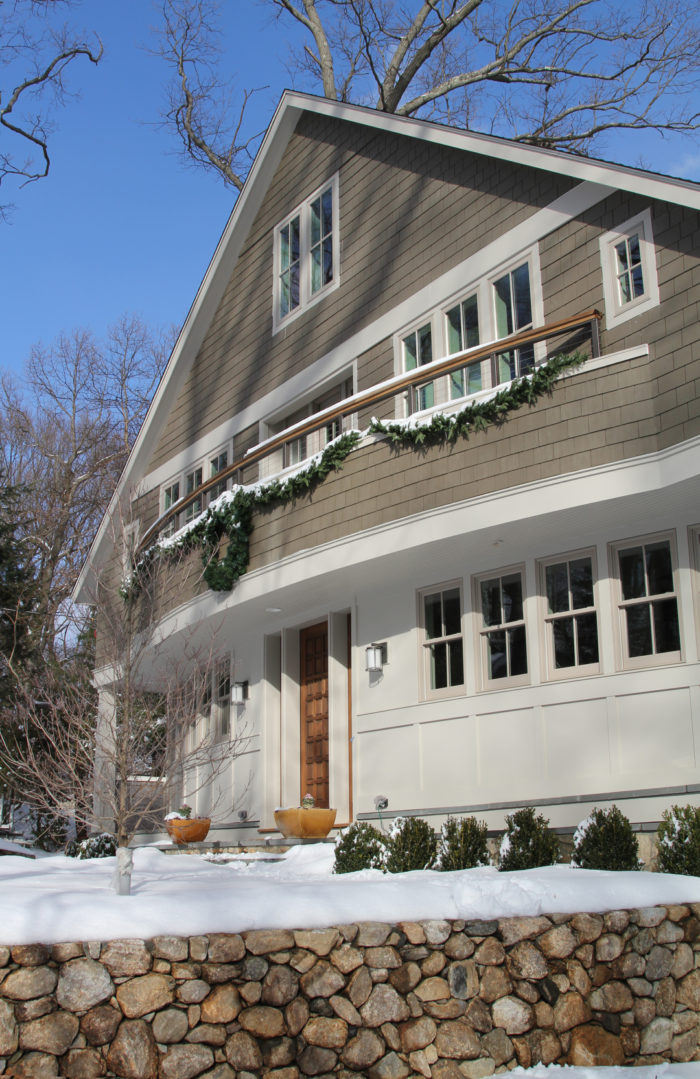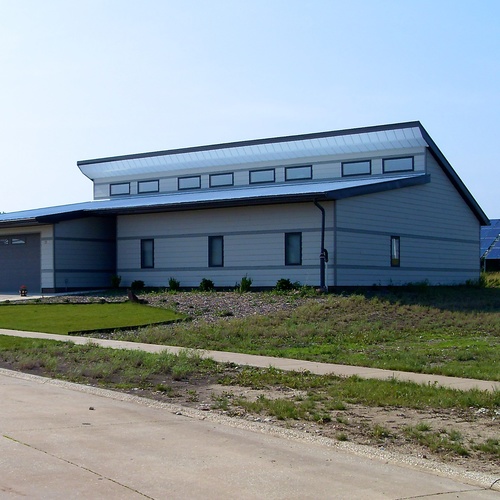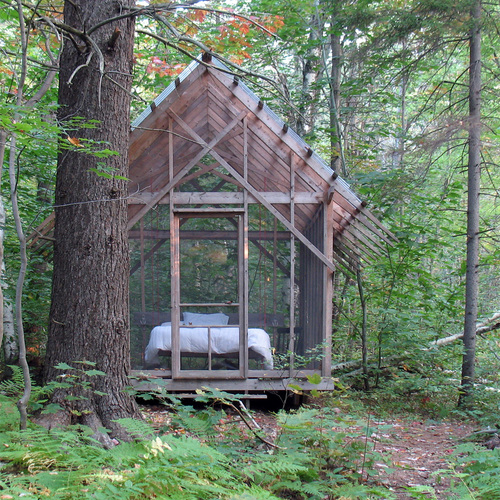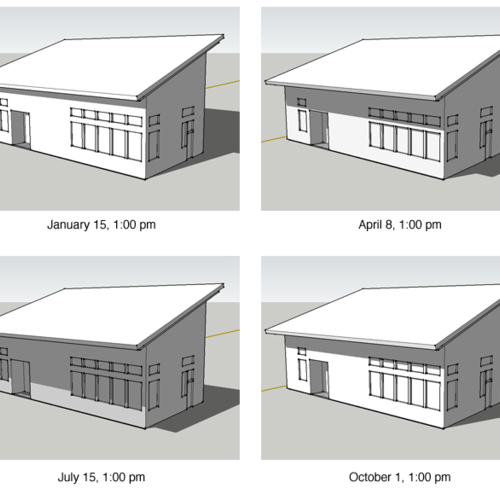
Current work by Trillium Architects:
This LEED-certified house in Rowayton, Connecticut, is described in detail on the firm's web site and blog.Image Credit: Trillium Architects
Elizabeth DiSalvo cut her green-building teeth in 1992 in what she describes as an off-grid community in Colorado where she lived in a converted railroad box car. There, she learned a “very grass roots approach” to building, but also recognized how difficult it would be to incorporate those ideas into the mainstream housing market.
When she returned to the East coast, she established Trillium Architects with fellow architect Eileen Crispell, and the two began practicing in the land of big houses and super-sized building budgets: Fairfield County, Connecticut, and Westchester County, New York. Both counties have lots of money and lots of well-heeled clients — but not always the greenest building instincts.
“Across Fairfield County, we still see massive builder homes going up on small lots,” their blog reads. “Often these homes are oversized, under-insulated, and use products that are bad for our environment. These homes do not in any way fit the values of green architecture.”
But you have to start somewhere.
“Clients come to Trillium with many needs and levels of interest in green renovation or construction,” they write. “Some request energy efficient technologies be installed for economic reasons, others request green building practices because they are attempting to ‘live their values.’ Some can afford to make their entire home ‘green,’ others can afford only to incorporate a few green products into a modest renovation. Trillium provides solutions in every shade of green.”
Trillium Architect’s blog is a mix of elements. In addition to some general observations about the elements of sustainable design, and primers on such things as ice dams, there’s a good deal of material about the houses they have built and renovated, much of it in Connecticut, but also a project in North Carolina and one in San Diego, California. The descriptions include multiple photos, floor plans, and even building and/or remodeling costs, not something that architects are generally in a hurry to share.
The houses are neither small nor inexpensive, but it pays to keep context in mind. A 4,000-sq. ft. house costing $1 million may seem like a lot, but in comparison to the many larger houses being built in these areas, it’s not so much. Moreover, you’ll also find a number of less expensive deep energy retrofits and renovations on the site, including a very sweet renovation and addition in swanky Ridgefield, Conn., that came it at $115 a square foot. Designs frequently lean toward Arts and Crafts.
Here are some excerpts from various parts of the blog:
About ice dams
“Ah the snow — There is nothing I geek out on more the day after a snow storm than driving around looking at other people’s roofs. Last night we got 22″ of snow in my home town. The way snow melts off of a house roof tells the story of the roof’s insulation inside. Different amounts of snow tell the story in a different way.”
How to prioritize the insulation of an historic home
“Insulating the outside walls in the end is the hardest and most ‘dangerous’ part of making your house energy efficient. Moisture is much harder to control in older, existing houses than it is in new construction or more recent retrofits. The most bang for you buck will come, anyway, from taking care of attic and basement heat loss and stopping air infiltration wherever possible.”
On teamwork
“Every construction project takes a team. The owner has a dream, the architect draws the dream and the builders constructs the dream. Along the way there is a ton of planning, changing, detailing, thinking ahead, worrying and bill paying. We all discuss and work on detailing the house and figure out exactly how it will be built. But a lot of times no matter how much you figure it out ahead of time or how well the architect details a house…it doesn’t always get built the way it was planned. A bad contractor cuts corners when architect and owner aren’t looking. A good contractor builds it better than the architect and owner expect.”
Taking a lesson from cars
“Mercedes, BMW, Audi, Lexus etc. Nice cars. Status symbols. Fantastic! Who wants to drive a Toyota when you could drive better? These are the cars many of us drive everyday and in the last years a shift has begun to take place. Most of these companies have begun creating more energy-efficient versions of their cars. In Europe more energy efficient versions of these cars have long been the norm. Why? Because even people with plenty of money available to drive these cars have become aware of the price of oil on many levels. If you are smart enough to make enough money to buy one of these cars, you are generally smart enough to understand the value of a dollar… The same is true of houses. You can get a builder box (a Yugo), you can get a developer home (a normal Honda Civic perhaps), or you can get something better.”
On the value of renovating
“We love to give existing houses facelifts! Saving what you can of an existing home is perhaps the most ‘green’ thing we can do as architects and builders. Eileen and I (Elizabeth) drive around and see the potential in every small and tired house. We can’t help it! Perhaps it is like a hairdresser instantly giving a client a make-over in their mind as they walk in the door. We see the many possibilities of composing beauty out of almost any house and we love doing it — it is one of the funnest parts of our job.”
What makes building go wrong
“Our worst building experiences ALWAYS happen due to bad communication — on anyone’s part. Lying, misleading, trying to cover your butt instead of admitting to missing something, bad-mouthing the other party — all of these are the hallmarks of a terrible construction project. All of these things lead to more problems down the line and more money wasted by all. No good!”
Weekly Newsletter
Get building science and energy efficiency advice, plus special offers, in your inbox.















0 Comments
Log in or create an account to post a comment.
Sign up Log in